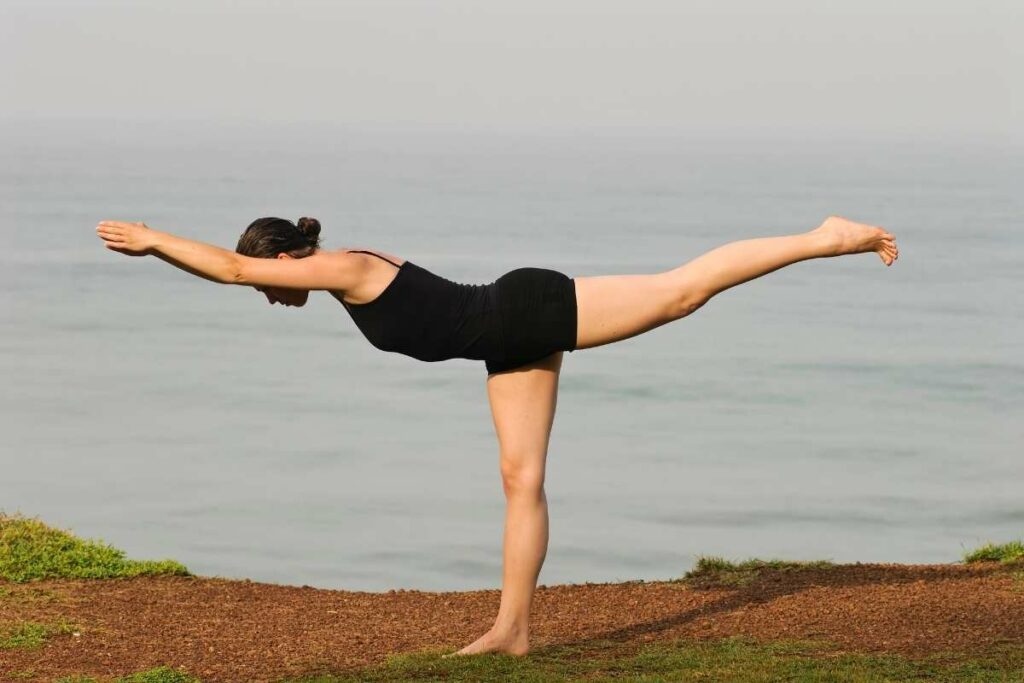Running for Beginners: A Comprehensive Guide for Women
Have you ever watched a marathon on TV, or seen a group of runners breezing through the park, and thought, “I wish I could do that”?
Well, guess what? You absolutely can!
Running is not just for the ultra-fit athletes. It’s for everyone – including you.
Welcome to the ultimate guide on running for beginners, tailor-made for all the amazing women out there!

This post may contain affiliate links, which helps keep this content free. Please read our disclosure for more info.
The Benefits of Running for Women
Running knows no gender, but there are certain perks that are especially potent for all the wonderful women out there.
From harnessing physical strength to cultivating mental resilience, running can be a transformative experience for women at various stages of life.
Whether you’re a young adult, moving through the ebbs and flows of mid-life, or gracefully embracing your golden years, running has something to offer.
Physical Benefits of Running

One of the primary benefits of running is its positive effect on cardiovascular health. Engaging in regular running helps lower blood pressure and cholesterol levels, which in turn reduces the risk of heart diseases.
Additionally, it improves blood circulation, ensuring that your heart functions more efficiently.
Running is also an excellent way to manage weight. It is a high-calorie burning exercise, helping in both weight loss and maintenance.
Aside from shedding pounds, running also helps in muscle toning and strengthening. It engages major muscle groups, especially in the legs and core, which leads to increased strength and muscle definition.
Another significant benefit of running is its role in improving bone density. As a weight-bearing exercise, running stimulates the growth of new bone tissue, making bones stronger.
This is particularly beneficial in reducing the risk of osteoporosis, a condition more prevalent in women where bones become weak and brittle.
Lung capacity and efficiency are also enhanced through running. As a cardiovascular exercise, running requires the lungs to supply oxygen to the muscles at a higher rate.
Over time, this leads to the lungs’ increased capacity and ability to process oxygen more efficiently, which is beneficial for overall respiratory health.
Finally, running has been shown to have a positive effect on the immune system. Regular physical activity, like running, has been linked to a lower risk of chronic diseases and infections.
Incorporating running into a regular fitness routine can contribute significantly to overall physical health and wellness.

Mental and Emotional Benefits of Running
Running is like a free therapy session.
Stressed? Run it off. Need a mood lift? The ‘runner’s high’ is real, ladies. And yes, it also adds clarity to your thoughts like a magic wand.
Let’s take a closer look at the mental and emotional benefits that running has to offer.
Stress Reduction
In the hustle and bustle of daily life, stress is something almost all of us experience. Running acts as a natural stress-reliever.
When you run, your body releases endorphins, often known as “feel-good” hormones, which can significantly reduce stress levels.
It also allows you to have some ‘me-time’, giving you the space to process your day, release tensions, and often find solutions to problems that have been bothering you.
Mood Enhancement
Circling back to that ‘runner’s high’. It’s not a myth! Running can genuinely lift your spirits.
Thanks to the endorphins and other neurotransmitters released during physical activity, running often leads to an improved mood and a sense of euphoria.
This can be particularly beneficial for women who experience mood swings or depression.
Mental Clarity and Focus
Running doesn’t just exercise your body; it gives your brain a workout too.
Engaging in regular running has been shown to improve concentration, memory, and cognitive function. It’s like your thoughts, which may have been tangled up, start to detangle and align.
This mental clarity can make decision-making easier and improve productivity in various aspects of life.

Anxiety Reduction
If anxiety is something that you deal with, running might be just the thing you need.
Physical activity, especially running, is like a chill pill for anxiety. It helps you get rid of all that nervous energy and, bonus points, it can actually help you sleep better.
Now, let me tell you about my mom. She’s been running forever, but she really leaned into it when life threw her a curveball. After being married for over 30 years, her husband, my step-dad, passed away after fighting cancer. It hit her hard, and she started to feel really anxious.
But, guess what? She put on her running shoes and hit the pavement. She says that when she runs, it’s like she leaves her worries in the dust. It helps her clear her head and feel a bit lighter.
Honestly, seeing her find her groove and get some peace through running has been pretty awesome. It’s like her zen zone, where she can breathe and just be.
If you’re dealing with anxiety, maybe give running a whirl. It could be your game-changer too.
Emotional Resilience
Running often involves pushing yourself, setting goals, and achieving them. This process can build emotional resilience.
It teaches the mind to persevere through challenges and can give a sense of accomplishment and empowerment.
This resilience can translate into other areas of life, helping you to tackle obstacles with more confidence and poise.
Social Benefits of Running

Running doesn’t always have to be a solo mission. Sometimes, it’s all about the tribe you build along the way!
Joining Running Groups
Have you ever thought of joining a running group? It’s like having a bunch of cheerleaders who also love to run. These groups can be super motivating and supportive.
Plus, it’s a lot harder to hit the snooze button when you know your squad is waiting for you.
Participating in Events and Races
Ready to take it up a notch? Sign up for a race or a charity run. Not only do you get to challenge yourself, but you also get to be part of something bigger.
The energy at these events is electric! You can bond with others over the shared experience, and who knows, you might cross the finish line with a new BFF.
Making Friends with Similar Interests
When you’re out there pounding the pavement with your running pals, you’re not just working up a sweat; you’re also building connections.
You’ll find that you share more than just a love for running. These can turn into meaningful friendships, and let’s face it, friends who run together, have fun together!
Accountability and Encouragement
When you run with others, there’s this awesome sense of accountability and encouragement.
Whether you’re having an off day or you’re on fire, your running buddies got your back. They’ll be there to high-five you on the good days and to give you that little push when the going gets tough.
Networking and Opportunities
And guess what? Sometimes, your running group can also be a goldmine of networking and opportunities.
You never know who you might meet – your next business partner, client, or mentor could be waiting at the starting line.
A Sense of Belonging
Being part of a running community gives you this warm and fuzzy sense of belonging. It’s knowing that you’re part of something special.
This feeling can be incredibly uplifting and can add a whole new layer of joy to your running journey.
Running for Beginners Tips: Before You Start

Like any epic adventure, having a game plan is key to success. Whether you’re a total newbie or you’re getting back into the groove, this section is your treasure trove of essential tips to get you geared up before you take that first stride.
From choosing the right shoes to setting realistic goals, here’s the lowdown on what you need to know before you hit the track. Let’s get this running party started!
Self-assessment and Goal Setting
Before you put on your running shoes, let’s hit pause for a quick reality check. It’s time for some good old self-assessment and goal setting.
Knowing where you stand and where you want to go is like having a running GPS – it’ll guide you in the right direction without getting lost in the endless options. Let’s break it down:
Assess Your Current Fitness Level
First things first, take stock of your current fitness level. Have you been pretty active, or is your couch your best friend?
It’s important to be honest with yourself so you can start at the right pace. If you’re new to the whole fitness thing or have been on a long break, it’s totally okay! Just know that it’s best to ease into running gradually to avoid injury.
Set SMART Goals
Now, let’s talk about goals. Not just any goals – SMART goals. That’s Specific, Measurable, Achievable, Relevant, and Time-bound.
For instance, instead of just saying, “I want to get fit,” make it more specific like, “I want to be able to run a 5K in 30 minutes within three months.”
This gives you a clear target and makes it easier to track your progress.

Choose Your ‘Why’
Your goal should be something that really resonates with you. Whether it’s shedding a few pounds, running a 5K, boosting your mood, or just having more energy to chase after the kids – make sure your goal means something to you.
This is your ‘Why,’ and it’s going to be the fuel that keeps you moving, especially on those days when you’d rather stay in bed.
Break it Down into Smaller Steps
Got your goal? Great! Now, let’s chop it up into bite-sized pieces. Say your goal is to run a 5K. You don’t just go out and run 5K on day one.
Start with something more manageable, like running or jogging for 10 minutes. Gradually increase your time and distance each week.
Related Article: 9 Things No One Tells You About Running a Half Marathon
Stay Flexible and Reevaluate
As you move along, you might find that your goals need tweaking. Maybe you’re progressing faster than you thought, or life throws you a curveball and you need to adjust.
That’s okay! The key is to stay flexible and be willing to reevaluate and adjust your goals as needed.
Remember, running is a journey. It’s not just about the destination, but also about embracing the process and the incredible changes it brings.
Essential Running Gear
Alright, so we’ve talked about assessing yourself and setting goals. Now, let’s get into the fun stuff – gearing up!
Think of yourself as a warrior princess setting off on an epic adventure. You wouldn’t go into battle without your trusty armor, right? So, let’s make sure you’re decked out in the right gear for your running escapades.

Running Shoes: Your Trusty Steeds
Let’s kick things off with the most essential item: running shoes. These babies are like your trusty steeds, carrying you across miles. When picking out running shoes, it’s all about comfort and support.
Look for shoes that cushion your feet like you’re stepping on clouds. It’s a good idea to head to a specialty running store where they can help you find the perfect fit based on your foot type and gait.
Comfortable Clothing: Your Battle Garb
Next up, the battle garb – your running clothes. Opt for moisture-wicking fabric to keep sweat at bay. As for the fit, think Goldilocks: not too tight, not too loose, but just right.
You don’t want anything chafing or flapping in the wind. Depending on the weather, layer up or down. But remember, once you get moving, you’ll heat up pretty fast, so don’t overdo it.
The Sports Bra: Your Shield
Ladies, this one is crucial – a supportive sports bra. Because let’s face it, some things should stay close to the heart, especially when you’re on the move.
Find a sports bra that provides enough support without feeling like a boa constrictor. There’s a fine line between secure and suffocating, so take the time to find your perfect match.
Accessories: Your Arsenal
Now, let’s talk about the extra tools in your arsenal. If you’re running outside, sunglasses and a hat or visor are great for keeping the sun out of your eyes.
Don’t forget the sunscreen to protect your skin. If you like tracking your progress, a running watch or app on your phone can be super helpful.
And, for those who can’t live without their tunes, a good pair of earbuds is a must.
Nutrition and Hydration

Let’s chat about how to fuel up your body like a boss. Because running on empty? Not so fun.
Food is Fuel
Alright, first up, food. Think of it as your magic potion for running awesomeness. A balanced diet is your best buddy here.
You know the drill – lean proteins (chicken, fish, tofu), whole grains (quinoa, brown rice), and loads of veggies. Oh, and don’t forget the colorful ones! The more colors on your plate, the better – like you’re eating a rainbow.
Don’t go running straight after a meal though – nobody wants a side of cramps. But, a small snack about 30-60 minutes before you head out is perfect.
Something like a banana or a granola bar will give you that extra oomph.
Water – Elixir of Life!
Now let’s talk about hydration, my friend. Water is like the VIP guest at this running party.
Seriously, it’s the elixir of life. It’s super important to stay hydrated, not just while you’re running, but before and after too. Keep a water bottle with you and sip throughout the day.
When you’re on your run, especially if it’s hot out or you’re going for a longer distance, bring some water along.
There are cool water bottles that strap to your hand or waist so you can be hands-free. It’s like your personal hydration butler!
Listen to Your Body
And you know what? The most important thing is to listen to your body. It’s smarter than you think and will totally tell you what it needs. If you’re feeling parched or low on energy, it might be time for a water or snack break.
How to Start Running: Step-by-Step Guide
Ready to hit the ground running? Literally! But let’s not wing it; having a game plan is the secret sauce for nailing this running gig.
This step-by-step guide is like your treasure map, leading you to the goldmine of a successful running journey. Whether you’re a total newbie or dusting off those old running shoes, we’ve got you covered.
Creating a Running Plan
Start slow, build steady. Combine running with walking. Gradually increase your running minutes. Remember, Rome wasn’t built in a day.
Finding the Right Place to Run

Okay, so you’re all geared up and ready to run, but wait – where should you go? Picking the perfect place is like choosing the ultimate backdrop for your epic running movie.
And guess what? It should be a place that speaks to your soul. Yup, it’s gotta have that vibe. Let’s explore some options:
The Park: Nature’s Playground
The local park is like nature’s playground. Think lush green trees, maybe a lake, and the sound of birds cheering you on.
If you’re someone who gets energized by fresh air and natural beauty, this is the spot for you. Plus, the softer ground is kind to your joints, which is always a win!
The Beach: Waves and Wonders

Imagine this: the sun setting, waves crashing, and sand beneath your feet. If that sounds like heaven, beach running is calling your name.
Not only is it stunning, but running on sand also adds an extra challenge to your workout. Just don’t forget your sunglasses and sunscreen!
The Gym Treadmill: Entertainment Central
If Mother Nature is not really your BFF or you want to avoid weather surprises, the gym’s treadmill is your safe haven.
Here’s the bonus: you can binge-watch your favorite series or rock out to your ultimate playlist while you run. It’s like a running party with Netflix and your favorite tunes!
The Neighborhood: Convenience is Key
Don’t feel like you need an exotic locale – sometimes, your neighborhood streets are the best option.
This can be super convenient, plus it gives you a chance to explore your area, wave to neighbors, and maybe even find a new favorite coffee spot.
Running Tracks and Trails: The Classics

For a more traditional approach, check if there’s a running track or trail nearby. These spots are usually designed with runners in mind, which means they’re often well-maintained and can be a great place to meet fellow running enthusiasts.
Remember, the perfect place for you is a combo of what makes your heart sing and what’s practical. Mix it up if you like, or find your sweet spot and stick to it.
The Importance of Warming Up and Cooling Down
Warming up and cooling down are essential parts of any running routine. They help to prepare your muscles for the activity and to recover afterward, which can prevent injuries and improve your running performance.
Warming Up: Preparing the Muscles
Warming up before a run is crucial. It gradually increases your heart rate and circulation, which helps to loosen the joints and increase blood flow to the muscles.
This prepares them for the physical activity to come. Spend about 5-10 minutes warming up. This can include light jogging, walking briskly, or doing dynamic stretches like leg swings or arm circles.
Cooling Down: Helping Recovery
Just as warming up is essential to prepare for your run, cooling down is crucial for wrapping it up.
Cooling down allows your heart rate and blood pressure to fall gradually. This is important for preventing muscle stiffness and soreness, which can occur if you stop suddenly after an intense workout.
Spend another 5-10 minutes cooling down after your run by walking and gradually reducing your pace. Follow this up with static stretching, focusing on your legs, back, and other areas that feel tight.
Remember that including a proper warm-up and cool-down in your running routine can make a big difference in how you feel during and after your run. It’s an investment in your body that will help you run more effectively and stay injury-free.

Breathing Techniques for Beginners
Let’s talk about breathing, because it’s kind of a big deal when it comes to running.
Good breathing can help you find your rhythm and maintain your stamina. So, let’s dive into some breathing techniques that can make your runs feel smoother and more enjoyable.
Breathe In, Breathe Out
First things first, let’s keep it simple. Breathe in the freshness, breathe out the fatigue. Focus on taking deep breaths, filling your lungs with air, and then exhaling fully.
This can help provide your muscles with the oxygen they need and release any tension or stress.
Rhythmic Breathing
Now, here’s a technique that many runners find helpful: rhythmic breathing. It involves coordinating your breath with your steps to establish a comfortable rhythm.
For example, you can try inhaling for two steps and exhaling for two steps. Some runners prefer a 3:3 or 4:4 pattern, while others find a 2:1 pattern (inhaling for two steps and exhaling for one) works best for them.
Experiment with different patterns and find what feels natural and comfortable for you.
Listen to Your Body
While rhythmic breathing can be a great technique to maintain a steady pace and focus, it’s important to listen to your body.
Don’t force yourself into a specific pattern if it feels uncomfortable or leaves you short of breath.
Remember, the goal is to find a breathing pattern that supports your running and allows you to feel relaxed and in control.
Practice Makes Perfect
Like any skill, mastering your breathing takes practice. It might feel a bit awkward at first, but the more you run and pay attention to your breath, the more natural it will become.
So, keep at it and be patient with yourself. Before you know it, you’ll find a breathing rhythm that works harmoniously with your running stride.
Remember, breathing is an integral part of running. It fuels your muscles and helps you maintain a steady pace.
Overcoming Common Challenges

Running isn’t always smooth sailing. Sometimes, you may encounter physical discomfort, face the setbacks of injuries, or struggle to stay motivated.
Dealing with Physical Discomfort and Injuries
When it comes to running, your body has a way of speaking up. So, listen closely. If the screams stop, it’s important to pay attention. It’s crucial to understand the difference between pushing your limits and potentially harming yourself.
Rest is not a sign of weakness; it’s an essential part of the process.
Related Article: Running for Weight Loss: How to Do it Without Injuring Yourself
Staying Motivated
Motivation can be a fickle friend. There are ways to keep that fire burning even when your running mojo takes a hit.
Track Your Progress
Tracking your progress is like having a personal cheerleader. Whether it’s using a running app, keeping a journal, or logging your runs on a calendar, seeing your improvement over time can be incredibly motivating.
Celebrate those little victories, like running an extra minute or hitting a new distance milestone. Every step counts!
Celebrate the Little Victories
Speaking of victories, don’t forget to celebrate them! Treat yourself to a small reward when you achieve a goal or reach a new personal record.
It could be indulging in a favorite treat, buying a new piece of running gear, or simply taking a moment to acknowledge and appreciate your accomplishments.
Remember, it’s the little victories that add up to big wins.
Share Your Journey
Running doesn’t have to be a solitary pursuit. Sharing your journey with others can bring a whole new level of motivation.
Find a running buddy who can join you on your runs, share tips and experiences, and provide that extra boost of accountability. Consider joining a running group or participating in virtual challenges to connect with like-minded runners.
The support and camaraderie can make all the difference.
Spice it Up

Variety is the spice of life, and that applies to running too. Keep things interesting by trying new routes, exploring different terrains, or mixing up your workouts with intervals or cross-training.
Engaging in fun running events, like themed races or virtual challenges, can also add excitement and keep your motivation high.
Remember, motivation can ebb and flow, but by tracking progress, celebrating victories, sharing your journey, and adding variety, you’ll keep that motivation flame burning bright.
Taking Your Running to the Next Level
Alright, superstar, you’ve been rocking your running routine, and now it’s time to level up.
Gradually Increasing Mileage and Intensity
Feeling like a pro? It’s time to take your running to the next level by gradually increasing your mileage and intensity. This is where the magic happens as you build endurance and push your boundaries.
Pace Yourself: Gradual Mileage Increase
When it comes to increasing your mileage, slow and steady wins the race. It’s important to be patient and give your body time to adapt.
Start by adding a little extra distance to your runs each week, whether it’s an extra half-mile or a full mile. Listen to your body and don’t be afraid to scale back if you feel any discomfort.
Remember, consistency is key, so aim for gradual progress rather than big leaps.
Incorporate Interval Training
To amp up the intensity and challenge your body in new ways, consider incorporating interval training into your workouts.
This involves alternating between periods of higher intensity, such as faster running or sprints, and periods of recovery or slower running.
Interval training not only improves your speed and endurance but also keeps your workouts engaging and fun. Start with shorter intervals and gradually increase the duration or intensity as you become more comfortable.
Embrace Cross-Training

Don’t forget to mix it up and include cross-training activities in your routine. Strength training, yoga, cycling, or swimming can complement your running by improving your overall fitness, preventing imbalances, and reducing the risk of injury.
Cross-training also adds variety and keeps things interesting, helping you stay motivated and engaged in your fitness journey.
Listen to Your Body
As you increase mileage and intensity, it’s crucial to listen to your body. Pay attention to any signs of fatigue, excessive soreness, or persistent discomfort.
Rest and recovery days are just as important as your running days. Give yourself time to recover and recharge, allowing your muscles to repair and rebuild.
Remember, taking care of your body is key to long-term success and enjoyment in running.
By gradually increasing your mileage, incorporating interval training, embracing cross-training, and listening to your body, you’ll build strength, endurance, and confidence.
Each step forward will bring you closer to your running goals and unlock new possibilities you never thought possible.
Participating in Running Events
There’s something truly electrifying about the atmosphere of running events. The camaraderie, the cheering crowds, and the shared sense of accomplishment make participating in races an exhilarating experience.
Find Local Races or Marathons

First things first, find local races or marathons that align with your goals and interests. There are plenty of options, ranging from fun runs and 5Ks to half marathons and marathons.
Explore race calendars in your area or search online for upcoming events. Consider factors like distance, terrain, and the overall vibe of the race to find the perfect fit for you.
Set Your Sights on a Goal
Once you’ve identified a race, it’s time to set your sights on a specific goal. It could be completing your first 5K, achieving a personal best in a half marathon, or even conquering the ultimate challenge of a full marathon.
Having a clear goal in mind will provide focus and motivation throughout your training.
Train and Prepare
Training is the key to success when it comes to running events. Design a training plan that suits your fitness level and aligns with the race distance you’ve chosen.
Gradually increase your mileage, incorporate speed work, and prioritize recovery. Consistency and gradual progress are key to ensuring that you’re physically and mentally prepared for race day.
Feel the Rush on Race Day
Race day is where the magic happens. The energy in the air, the adrenaline pumping through your veins, and the support of fellow runners and spectators create an electric atmosphere.
Embrace the nerves and excitement as you line up at the starting line, knowing that all your hard work has led to this moment.
Enjoy the Journey
Remember, participating in a running event is not just about crossing the finish line; it’s about enjoying the entire journey. Embrace the process, savor each milestone, and celebrate every step along the way.
Running events provide an opportunity to push yourself, grow as a runner, and create memories that will last a lifetime.

In Conclusion
Remember, running is not just about reaching the finish line but embracing the entire experience. It’s about the progress you make, the strength you gain, and the joy you find along the way.
Whether you’re running solo or with a community of fellow warriors, every stride you take is a testament to your dedication and resilience.
So, take that first step, trust in your abilities, and let running empower you to become the best version of yourself.
Embrace the challenges, celebrate the victories, and savor the moments of pure exhilaration. And always remember, you are capable of achieving more than you ever imagined.
